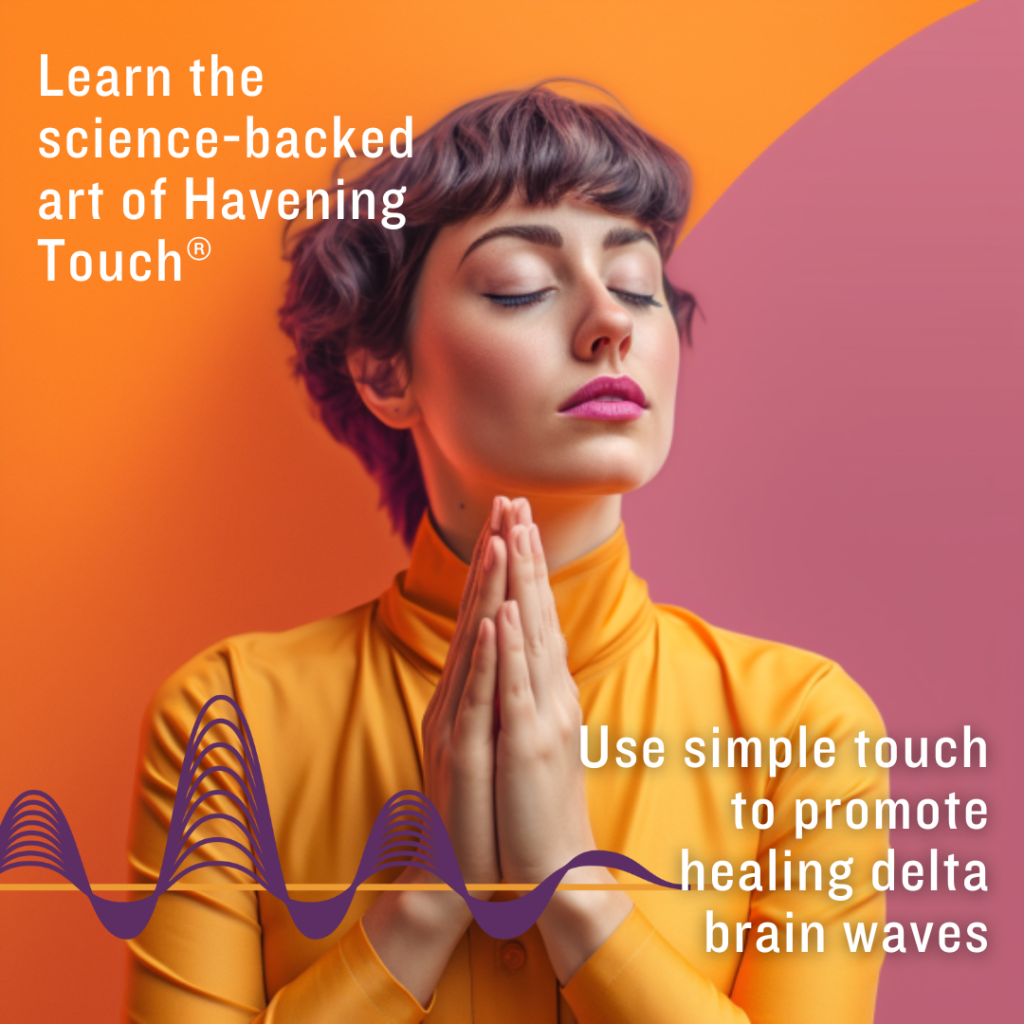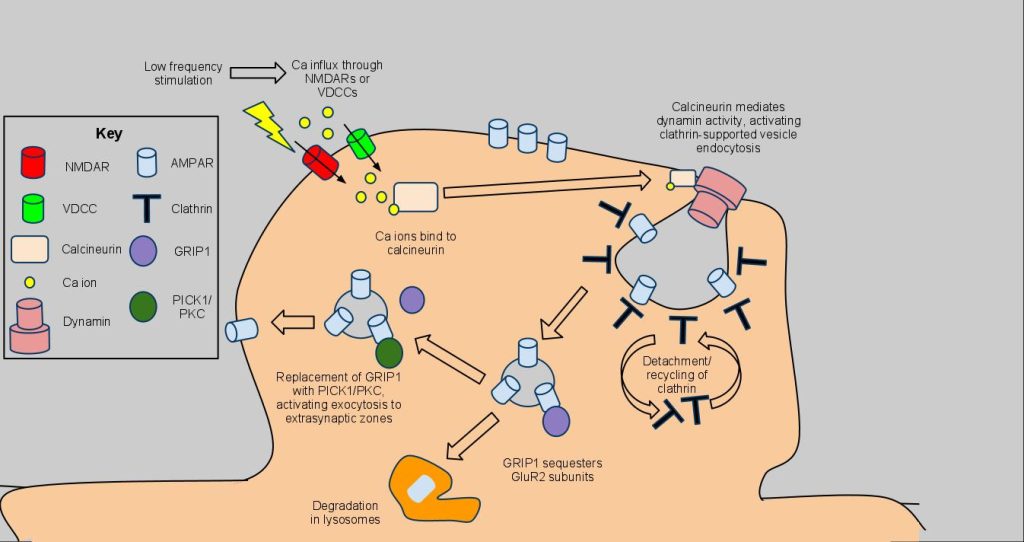There are different mechanisms for “fast learning” (threat-based learning and novelty-based learning) and “slow/normal learning” (learning without the presence of threat). These types of learning are associated with different neural and physiological mechanisms in the brain. We can also unlearn things as well – quickly or slowly. In this post we’ll look at:
- Fast, threat-based learning
- Fast, novelty-based learning
- Slow/normal learning
- Fast unlearning with Havening Touch®
- Slow unlearning
- Link to “fast unlearning” via quantum recalibration (NDEs, pivotal experiences, Oneness experiences, nondual experiences, etc)
Fast Learning: Threat-based

Fast learning that’s threat-based is characterized by rapid and intense learning in response to a perceived threat or danger. When the brain detects a potential threat, it activates the stress response system, which involves the release of stress hormones like cortisol and adrenaline. This stress response enhances the brain’s ability to form memories related to the threatening event and promotes a state of heightened alertness and arousal. In this state, the brain is more focused on survival and self-preservation, and learning becomes prioritized to quickly adapt to the threat.
The mechanisms involved in fast learning include:
- Amygdala Activation: Fast gamma wave activity in the amygdala is believed to be involved in assessing the significance and potential threat or reward value of the novel stimulus, and thus plays a central role in fast learning. In this first case of fast learning (threat-based), the amygdala rapidly processes sensory information related to the threat, triggers the stress response (for immediate survival), and also kicks off the process of encoding the trauma — it wants to encode all it can to help ensure future safety, forming associations between the sensory cues of the threat and the emotional response of fear. This process is critical for quickly recognizing and responding to similar threats in the future. The felt-sense components of the threatening (and complementary) content are saved (encoded) for future protection. In order for an event to create a traumatic encoding, it needs to meet the criteria of EMLI (event, meaning, landscape, inescapability). It’s also good to note that when the amygdala encounters threatening or fear-inducing content, the gamma wave activity may become more pronounced and sustained. In studying Havening Techniques, I learned that trauma encodings occur when the gamma waves are 100Hz or more.
- Stress Hormones: Stress hormones like cortisol and adrenaline enhance memory consolidation in the brain, making the learning associated with the threat more enduring.
- Sympathetic Nervous System Activation: The sympathetic nervous system, which is part of the autonomic nervous system, is responsible for the body’s fight-or-flight response. Activation of this system during threat-based learning facilitates the rapid formation of memories.
- Enhanced Attention: Threat-based learning leads to heightened attention and increased focus on the threatening stimuli, allowing for more efficient encoding of the information.
The beginning of this video describes “fast learning” in times of danger:
Key points:
- Traumatic or intensely stressful events can cause fast brain waves (gamma waves) in the amygdala, leading to the encoding of traumatic memories in the cell membrane of neurons.
- In the presence of the fast brain waves (gamma) and fast calcium ion oscillation, APMA receptors are installed in the cell membrane. These AMAP receptors represent trauma encodings. Moreover, the brain is encoding not only the threatening content but also surrounding sensory data, emotions, beliefs, and more. The amygdala is buildings a C.A.S.E. for trauma, encoding many aspects for future protection: cognitive, autonomic, somatosensory, and emotional content.
Fast Learning: Novelty Based (Safe)

Fast learning based on novel information: The role of novelty in learning is significant and can influence various aspects of cognitive processes and memory formation. Novelty refers to new, unexpected, or unfamiliar stimuli or experiences that differ from what an individual has encountered before. When presented with novel information, the brain engages in specific mechanisms that promote enhanced learning and memory consolidation.
Here are some key aspects of the role of novelty in learning:
- Amygdala Activation: As mentioned above, really fast gamma wave activity in the amygdala is believed to be involved in assessing the significance and potential threat or reward value of the novel stimulus, and thus plays a central role in fast learning. When we encounter something new or unexpected, the amygdala becomes activated, and there is often an increase in gamma wave activity in the brain. It makes sense to me that positive emotions, etc (build a “CASE for Self” as they say in the Havening community) would be at play here It also makes sense to me that the the gamma oscillations originating from the amygdala can influence the hippocampus and contribute to both fast learning and memory consolidation, depending on the emotional context and significance of the experience. The interplay between these brain regions is a fundamental mechanism that allows the brain to adaptively respond to various stimuli and experiences in a dynamic manner. (See recommended videos below to learn more about long term potentiation, etc). The amygdala plays a crucial role in the encoding and consolidation of emotional memories. The hippocampus, on the other hand, is involved in the formation and consolidation of declarative memories, which are conscious memories about facts and events.
- Attention and Engagement: Novel stimuli capture attention and promote increased cognitive engagement. When something new and unexpected is encountered, the brain allocates more resources to process and analyze the information. This heightened attention enhances the encoding of the novel experience into memory.
- Dopaminergic Signaling: Novelty is associated with the release of dopamine, a neurotransmitter involved in reward and motivation. Dopamine signaling is known to strengthen synaptic connections and facilitate long-term potentiation (LTP), a process crucial for memory formation.
- Enhanced Memory Consolidation: Novel experiences are often more memorable and better retained in memory compared to familiar ones. The brain’s response to novelty can lead to stronger and more durable memory traces, making it easier to recall the new information later.
- Neuroplasticity: Exposure to novel experiences can promote neuroplasticity, which refers to the brain’s ability to reorganize and form new connections between neurons. Neuroplasticity allows for adaptive changes in neural circuits, facilitating learning and memory processes.
- Contextual Learning: Novelty can help create distinct and unique contextual cues that aid in memory retrieval. When something stands out as novel, it becomes a salient cue associated with specific experiences or information, making it easier to recall later.
- Cognitive Flexibility: Novelty promotes cognitive flexibility, the ability to adapt and adjust one’s thinking and behavior in response to new information. This flexibility is essential for learning and problem-solving in diverse situations.
- Exploration and Curiosity: Novelty can drive exploration and curiosity, leading individuals to seek out new experiences and information. This natural inclination to explore the environment contributes to ongoing learning and intellectual growth.
Slow / Normal Learning (Safe)

Slow or normal learning occurs in the absence of immediate threat or danger. It involves more typical and gradual learning processes that occur in everyday situations without heightened arousal or stress. The brain is in a more relaxed state, and the learning is characterized by a focus on understanding and integrating new information into existing knowledge networks.
The mechanisms involved in slow or normal learning include:
- Hippocampus Activation: The hippocampus, a brain structure crucial for memory formation and spatial learning, plays a significant role in slow learning. It processes and integrates new information into existing memory networks.
- Neuroplasticity: Slow learning is associated with neuroplasticity, which refers to the brain’s ability to adapt and reorganize its neural connections in response to learning and experience.
- Delta and Theta Waves: Slow learning is often associated with slower brainwave frequencies, such as delta and theta waves, which are linked to relaxation, focused attention, and memory consolidation.
NMDA and metabotropic glutamate mGlu receptors have been found to play essential roles in synaptic plasticity and LTP. Studies suggest that the activation of these receptors, more than AMPA, is essential for the induction of LTP, a process possibly enhanced during the delta wave activity in sleep (Volianskis, A., Bannister, N., Collett, V. J., Irvine, M. W., Monaghan, D. T., Fitzjohn, S. M., … & Jensen, M. S., 2013). The application of Havening Touch® causes an increase in delta wave activity in the brain. It’s suggested that these delta waves may enhance processes like long-term potentiation (LTP). Havening Touch® also reduces activity of the amygdala, a brain region associated with fear and stress responses. This may occur by encouraging the release of serotonin and other neurochemicals that promote well-being, leading to a decrease in stress-related neural activities. This could potentially enhance cognitive functioning, including learning processes, by creating a more conducive state for neural plasticity and LTP (Ruden, R. A., 2011). - Sleep and Memory Consolidation: Sleep is essential for memory consolidation during slow learning. The brain processes and strengthens memories during various stages of sleep, contributing to long-term retention of information.
Slow learning involves a combination of brain waves and brain regions that support the encoding, consolidation, and integration of new information into existing knowledge networks. Slower brainwave frequencies, such as theta and delta waves, are commonly observed during slow learning, along with activation of the hippocampus and engagement of neuroplasticity mechanisms. Sleep also plays a critical role in memory consolidation during slow learning, allowing the brain to solidify newly acquired information. Gamma oscillations are associated with information binding, integration, and working memory. During slow learning, gamma waves may also play a role in integrating new information into existing knowledge networks.
Fast Unlearning: E.g. with Havening Techniques® (Safe)

Fast Unlearning: In Havening Techniques®, what I call “fast unlearning” refers to the process of efficiently and effectively dismantling encodings (things we learned), e.g. traumatic or distressing memories, emotions, and associations, yet also subconscious beliefs and things we learned via the “slow learning” described above. (Note too that Havening can help us install new encodings as well.)
The process of “fast unlearning” in Havening involves two main steps. I will describe this with the example of a trauma encoding that we wish to dismantle:
- Activation of the traumatic encoding:
The first step is to activate the traumatic encoding or distressing memory. This is achieved through a specific protocol that involves recalling the event and deliberately activating the traumatic memory in a felt sense (emotions, body sensations and tensions, heart and breath rate, etc). The felt sense activation is more important than the story of what happened. The AMPA receptors that were installed so that the person would remember this threat (and even nonthreatening content that happened to be involved) would then become activated.
During this activation phase, there is likely an increase in gamma wave activity, which is associated with heightened attention and focus on embodying the traumatic experience.
- Application of delta waves (endocytosis of AMPA receptors):
Once the traumatic encoding is fully activated, the Havening practitioner then guides the individual through the process of generating delta waves by applying targeted touch.
The combination of activating the traumatic encoding (gamma phase) and then applying delta waves (delta phase) is believed to facilitate the endocytosis of AMPA receptors (trauma encodings) because activation exposes a phosphate group on the inner wall of the cell membrane, and the slow oscillations of calcium ions prompt a mini cascade of events that remove (uninstall, dismantle, endocytose) the trauma encoding. Distractions are used during this second step so that the “delta waves can do their healing,” however, these are distractions to keep the working memory out of the loop (lest it start searching the brain archives for other scary and bad memories). Did you watch the EMLI video above? It’s okay if you didn’t. I will just tell you that one of the criteria for a trauma encoding is inescapability. Well, when we apply Havening Touch and get those delta waves going, it becomes clear to the body that: WE ESCAPED. The slow oscillations allow for a Hungry, Hungry Hippo-like endocytosis of the applicable AMPA receptors:

It actually looks a little bit more like this:

Used with CC license, created by Psy165s2011
The process of “fast unlearning” with Havening Techniques ® allows individuals to quickly and efficiently release the emotional charge of traumatic memories, allowing for a transformation in their emotional responses and overall well-being. By targeting the neural mechanisms involved in the encoding of traumatic memories and promoting relaxation and safety, Havening provides a powerful and rapid way to facilitate positive change and healing.
Rapid Unlearning… A Special Case (Safe)

Read this post to see my thoughts on quantum recalibration (safe, novel, rapid unlearning).
Recommended Videos:
Brain Synapse Plasticity: LTP, LTD, and STDP | 22nd Week in Medical School
Long-Term Plasticity In The Hippocampus (LTP, LTD, STDP) | Clip
